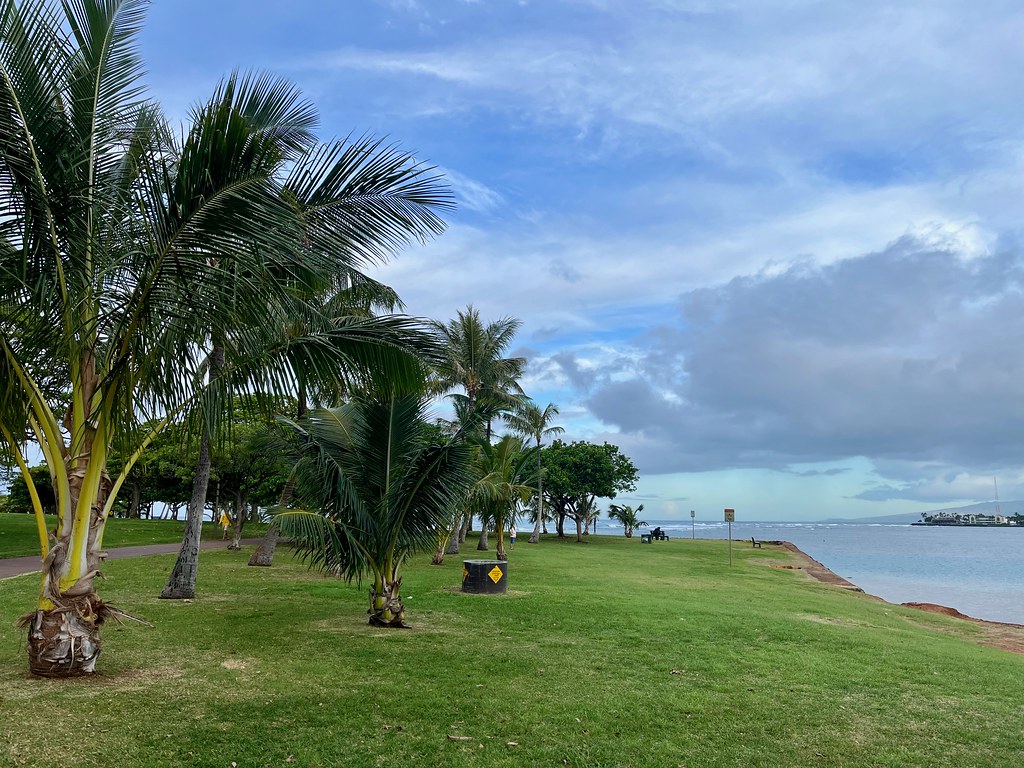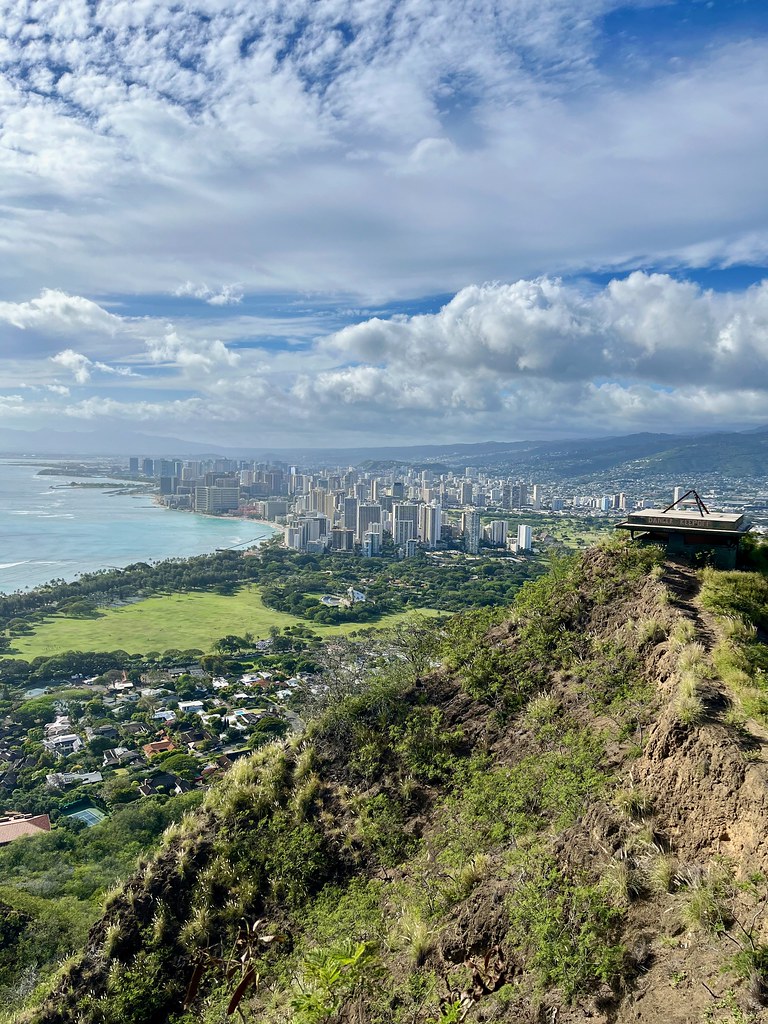Most of my work trips are pretty mundane. The last three were rather typical — Philadelphia, Tampa and Atlanta — for example. Sometimes I go to more interesting places like my quick jaunt to Germany a few years ago. However, this time I hit the jackpot: Hawaii, Japan, and South Korea over a two week period.
Of course I was working so I didn’t get to see as much as if I’d like. I spent a lot of daylight hours in various conference rooms, offices and facilities. But early mornings and the evenings were mine and I tried to cram as much into them as I could. This series of articles will focus on those brief opportunities plus a couple of interesting things I got to do as part of my work.
I’ll set the stage with this short video from the first couple of days, from my initial stop in Honolulu, Hawaii. It offers views of Magic Island at Ala Moana Park, the top of Diamond Head, and Sandy Beach. It was all as lovely as it looked.
Landing Pad

I stayed at a hotel along Honolulu’s famous Waikiki Beach. Mostly my room faced another hotel tower across the way. However, if I stepped onto the balcony and craned my neck I could see the oceanfront view presented in this photo.
It sat on the third floor directly above an outdoor entertainment area where live music played well into the evening. So I got serenaded each night whether I liked it or not (mostly not) by an ’80’s cover band and I couldn’t go to bed until they finished. It’s weird staying at a place where probably 99% of the other guests are on vacation. It was the most convenient home base for my work-related activities though, so there I stayed. It felt a lot different than my last visit to Hawaii in 1997.
Waikiki Beach Walk

Honolulu is a six-hour time difference from the east coast of the United States during this time of year. I wasn’t surprised at all when I woke up at 3:00 a.m. Hawaiian Time and couldn’t get back to sleep that first morning. So I caught-up on email and waited impatiently until daylight. Then I took a walk along the famous shores of Waikiki Beach (map).
Half of Honolulu seemed to be doing the same thing, I guess because everyone else flew-in the previous afternoon too. So me and all the other jet-lagged zombies killed time walking the shoreline sand as the sun gently rose behind Diamond Head.
Ala Moana Park

I adjusted to the time difference by the following morning and craved some more intensive exercise. Two laps around the perimeter of nearby Ala Moana Park at a brisk pace did the trick. And it was quite a workout! After enduring a mainland winter my body wasn’t prepared for a warm, humid run.
It was a lot less crowded than Waikiki too; just me, a few shoreline fishermen and residents of a homeless camp. I felt sympathetic for those unhoused individuals although if one had to be homeless, I suppose Hawaii might be one of the better places to do that. It’s about 80° Fahrenheit (27° C) all year long.

I spotted an unusual patch of grass during my run and I had to check it out my final morning in Hawaii. It seems I stumbled upon the home of the Honolulu Lawn Bowls Club (map). Several years ago I focused an entire article on Lawn Bowling and it has fascinated me ever since. I was thrilled to stumble upon a real world example in person.
They’re found more commonly in the Commonwealth of Nations — the former territories of the British Empire — and I wondered why it was here in Hawaii. According to the Club, “the idea of the bowling greens began in 1935 by Dr. Richard Ebsworth from Australia when he petitioned the city to build the greens“. Mystery solved.
Diamond Head

Just enough daylight remained after my final workday in Hawaii to quickly visit Diamond Head (map). It looks like a solid massif when viewed from Waikiki Beach. However, it holds a secret — it’s actually the rim of a caldera. I knew this ahead of time but it’s still fun to drive through the tunnel entrance and find oneself at the bottom of a mountainous bowl of a dormant volcano.
But that’s not why I was there! I wanted to climb to the top of Diamond Head and return before dusk. It’s not terribly challenging — about 0.8 miles (1.3 km) to the summit with a 560 foot (171 m) elevation gain — although it gets the blood pumping. Spectacular scenery including sweeping views of downtown Honolulu greets those who make it to the top. Plus the trail goes through a series of old military bunkers built prior to World War II. So whether it’s scenery or history, Diamond Head had it covered.
Diamond Head Lighthouse

Well, look what I spied with my little eye as I sat atop Diamond Head. A lighthouse! It seemed like I should add it to the list on my Lighthouse Collection page because I count those too. Unfortunately I couldn’t visit it in person because it’s not open to the public; it’s the residence of the Coast Guard admiral stationed in Hawaii. Maybe I chose the wrong career?
Articles in the Asia-Pacific Series
- Oahu: Honolulu Waterfront
- Oahu: Beyond Waikiki
- Japan: Tokyo Temples and Tourists
- Japan: Exploring Tokyo
- Japan: Farther Afield
- South Korea: Seoul
- South Korea: The DMZ
- Postscript: Interesting Signs
- Postscript: Brew It
See Also: The Complete Photo Album on Flickr

Leave a Reply